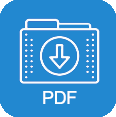Why are there differences in sliding bearings before and after use
When the sliding bearing is working, friction will occur due to the contact between the journal and the bearing bush, which will cause surface heating, wear and even "seizure". Therefore, when designing the bearing, the bearing bush should be made of sliding bearing materials with good anti-friction properties, and a suitable smoothing agent And adopt appropriate supply methods to improve the structure of the bearing to obtain smooth thick film and so on.
1. Corrosion on the outer surface of the journal: Spectral analysis found that the concentration of iron is abnormal. There are many sub-micron particles of iron in the iron spectrum, and the water content of the sliding bearing lubricating oil exceeds the standard or the acid value exceeds the standard.
2. Bearing wear: Due to the metal characteristics of the sliding bearing shaft (high hardness and poor concession), it is easy to form adhesion wear, abrasive wear, fatigue wear, fretting wear and so on.
3. Corrosion of tile surface: Spectral analysis found that the concentration of non-ferrous metal elements is abnormal; there are many sub-micron wear particles with non-ferrous metal components in the spectrum; the moisture of the smooth oil exceeds the standard, and the acid value exceeds the standard.
4. Shaft neck surface strain: there are iron-based cutting abrasive particles or black oxide particles in the iron spectrum, and the metal surface has a tempered color.
5. Bearing burning: There are more large-size alloy abrasive grains and ferrous metal oxides in the iron spectrum of sliding bearings.
6. Tile surface spalling: There are many large-size fatigue spalling alloy wear particles and layered abrasive particles found in the iron spectrum.
7. Fretting wear on the back of the tile: Spectroscopic analysis reveals that the iron concentration is abnormal. There are many sub-micron wear particles of iron in the iron spectrum, and the moisture and acid value of the smooth oil are abnormal.
8. Bearing surface strain: cutting abrasive particles are found in the iron spectrum, and the components of the sliding bearing abrasive particles are non-ferrous metals.
The above is all about the sliding bearing, I hope it will be helpful to everyone.



 English
English Español
Español Deutsch
Deutsch
















